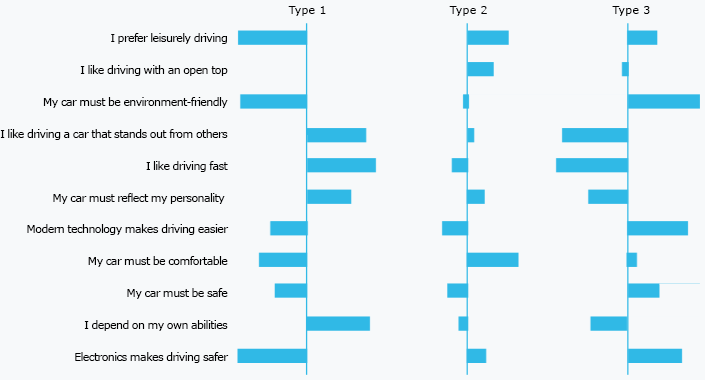Cluster Analysis
USE CLUSTER ANALYTICS TO IDENTIFY DATA PATTERNS ANDTO SEGMENT DATA
Cluster analysis is a statistical procedure that makes it possible to organize similar objects into groups (clusters). As part of a market research, a cluster analysis can find out which objects are similar in your data set and which are not. This can help identify data patterns in your data and identify relationships between objects.
CLUSTER ANALYSIS FOR TARGET GROUP-ORIENTED APPROACH
The groups thus found would not be identifiable through conventional group formation, for instance by age group, gender, income, etc. They contain objects which are as similar as possible in terms of the attributes employed. One example of this would be persons who share the same opinion on a particular topic. Thus, it becomes possible to assist marketing departments in addressing target groups in the most appropriate manner.

Cluster analysis: Profiles of motorists types
FIVE PREREQUISITES FOR SUCCESSFUL CLUSTER ANALYSIS
- The characteristics by which persons are to be classified must be specified in advance (active variables). Typically, statement batteries are used for this purpose. These may cover e.g., the opinions held by respondents on particular subjects.
- The scale used makes no difference to the calculation, but all active variables should use an identical scale. If questions with differing scales are being used, these must first be standardized to the same scale.
- As a standard rule of thumb, every cluster should include at least 50 persons. We recommend a sample size of at least 300 persons.
- When specifying active variables, it should be kept in mind that these should not exhibit an overly high level of correlation with one another. The redundant information would have an excessively high impact on the formation of groups. However, in real life this can never be completely eliminated.
- To avoid high levels of correlation, it is sometimes advisable to include a Factor Analysis.


